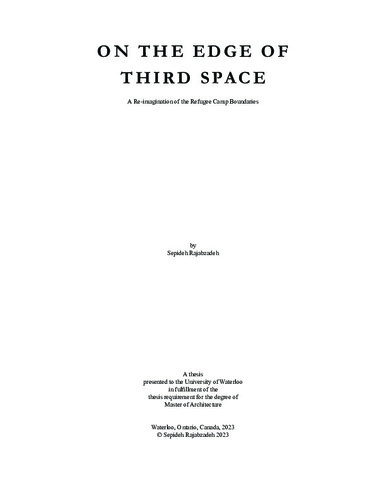| dc.description.abstract | This thesis explores the pivotal moment in which a refugee camp transcends its original temporary purpose. Central to this exploration is the intersections of architecture and citizenship practices in politically grey lands.
This work focuses on the shift from refugee camps as a military issue to an international humanitarian problem post the 1951 UNHCR Refugee Convention. Following the Refugee Convention, standardized responses to such crises rolled out. These refugee camps, with no durational end point, evolve into unique city-camps with urbanization characteristics resembling a hybrid of home country and host country.
In this thesis, the Za’atari camp in Jordan, home to 80,000 Syrian refugees, serves as a representative model to imagine new spatial typologies for camps and new political structures. The thesis challenges the commonly accepted notion of a “better life” outside the camps. It proposes a counter-narrative, suggesting looking inward at the potential of the camps to evolve into empowering political entities.
Using the concept of a wall in the border zone of the camp as the main articulation point of the design, the camp’s current fence, formally a symbol of division and repression, becomes a thickened zone of physical, social, and cultural infrastructure. It not only serves the camp’s residents but is also designed to adapt and accommodate various programs over time. This new threshold to the camp, now a gateway rather than an exclusionary fence, challenges the very notion of the camp, hinting at a new idea of displaced citizenship - a third space or a transnational city-state. | en |

